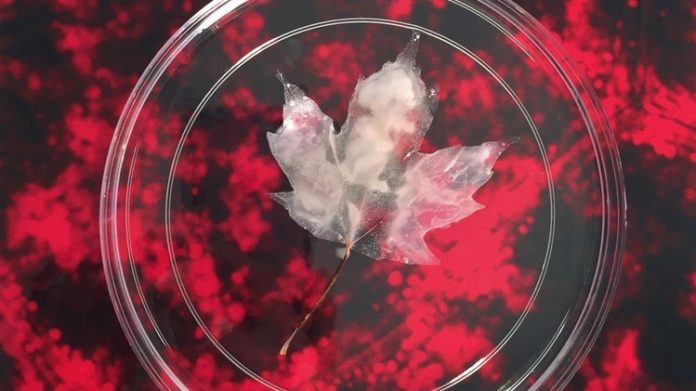Tuberculosis may be largely eliminated in Canada, but its legacy is still pervasive. Toronto artist Elaine Whittaker’s new exhibition, Contained, blends the “clinical and fantastical” to explore the duality of containment as it relates to fighting contagious diseases and saving those trapped by them.
Inspired by her mother’s TB treatment at a sanitorium in rural Quebec in the 1940s, Whittaker weaves the metaphorical and material to illustrate the struggle of her experience. Her mother spent years mostly confined to a bed as part of rest therapy along with a now-defunct treatment known as artificial pneumothorax – collapsing the lungs to cut off oxygen flow to the TB bacteria.
Fittingly, the centrepiece installation recreates the sanitorium environment. Contrasting the stagnancy of her containment and the looming possibility of succumbing to TB is a representation of the surrounding forest, composed of waxed grape stems and decellularized maple leaves.
Fantasies of escape through flight as a bird persisted in her imagination during her two-year stay in the sanitorium. “The notions of a confined bird on the edge of expiration and a fantastical forest that heals and provides hope is woven through most of the artworks,” says Whittaker.
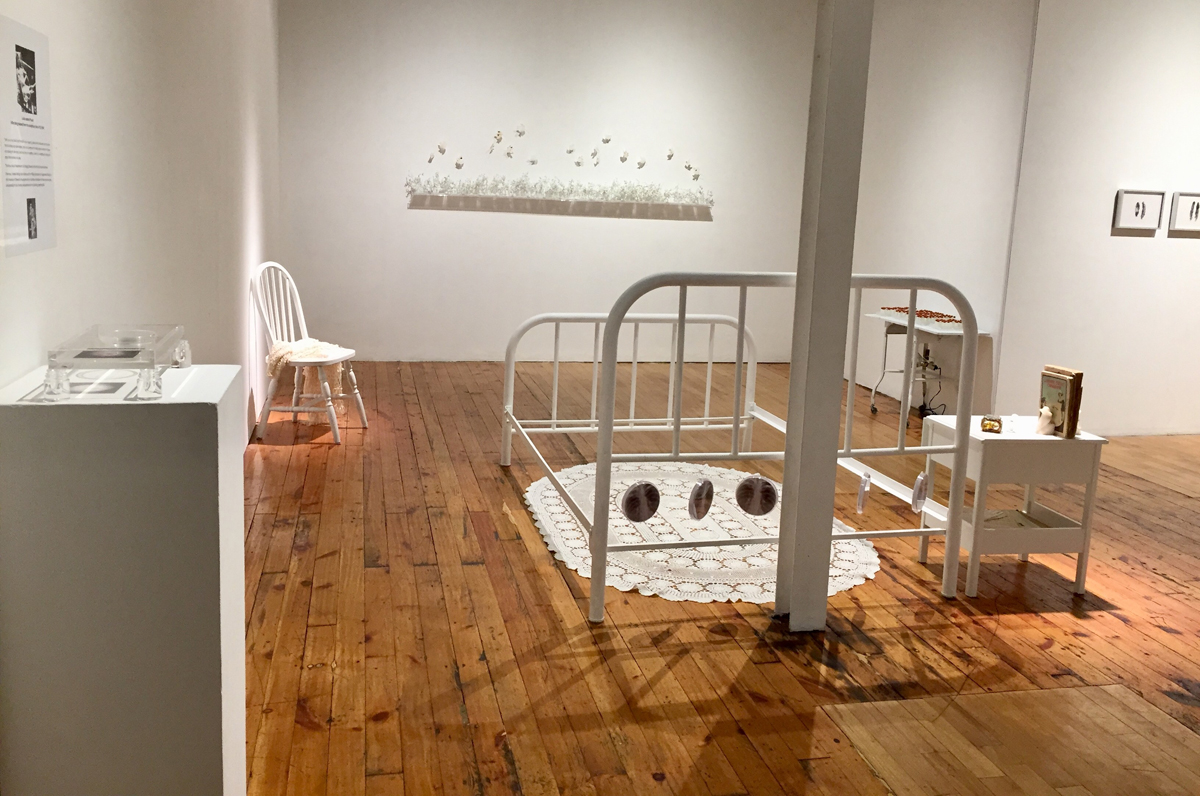
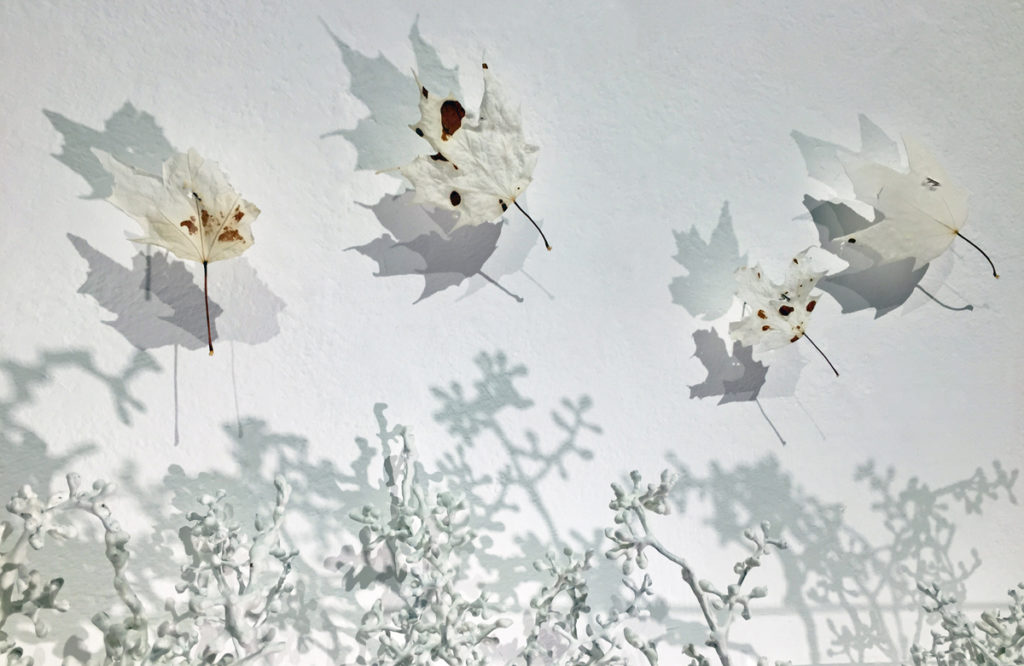
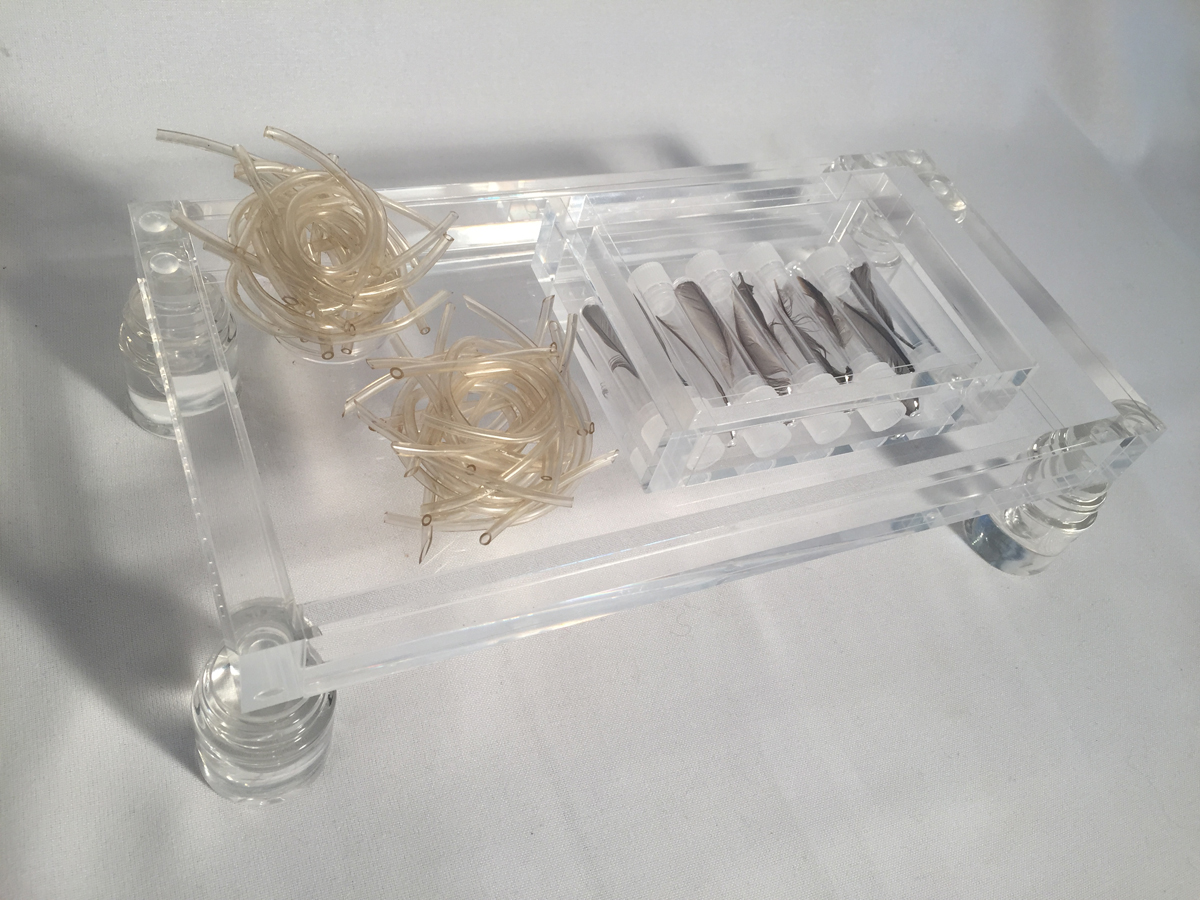
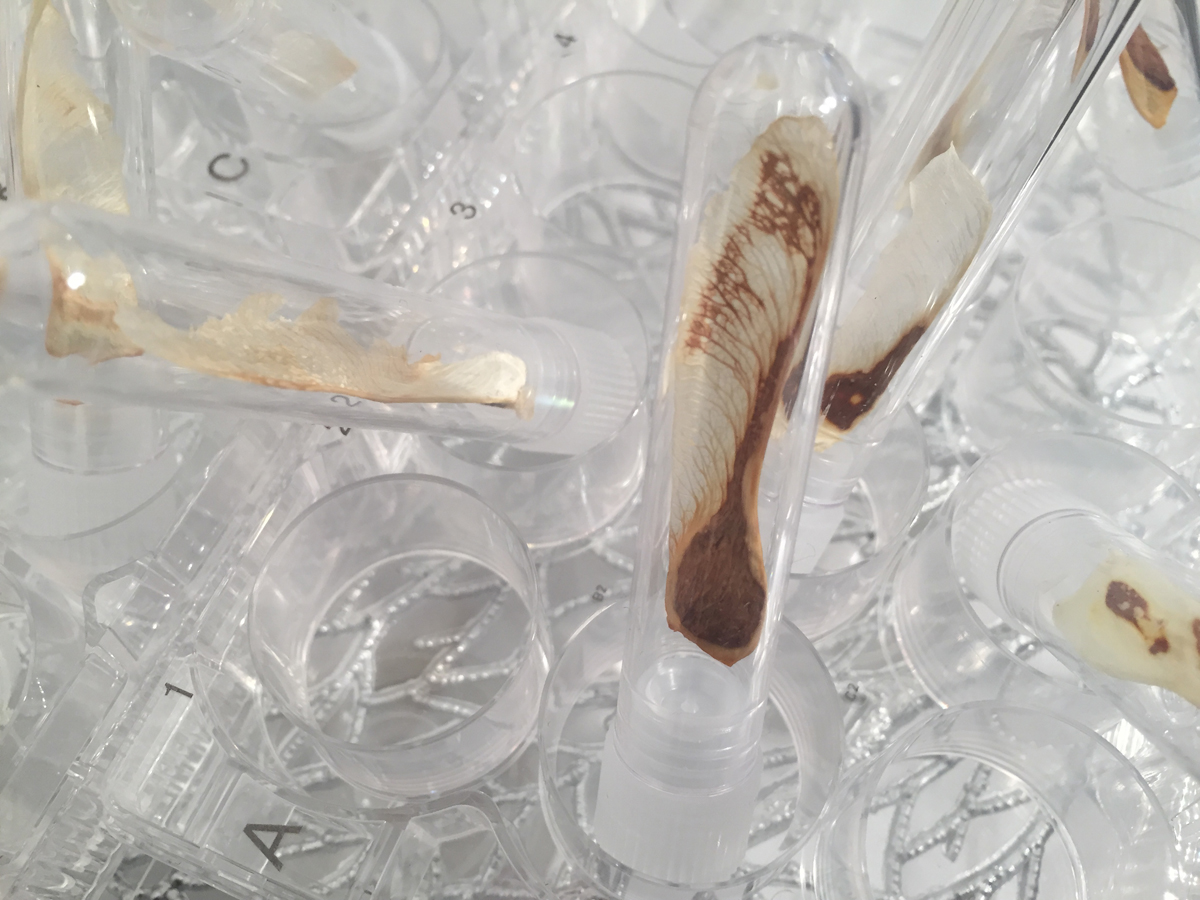
The symbolism of hope and escape is not only relevant on an individual level, but also in overcoming the disease as a whole. TB still lurks in the shadows in Canada; some 1,600 active cases exist nationwide.
On a global scale, it is still one of the top ten killers according to the WHO: 1.7 million people died in 2016 and over 10 million were diagnosed. Eliminating TB is one of the health targets of the 2030 Sustainable Development Goals, though significant challenges remain including drug-resistant strains which complicate treatments.
Accordingly, a key section of the exhibition is dedicated to this ongoing struggle – both in and out of Canada – to stop the destructive force of TB.
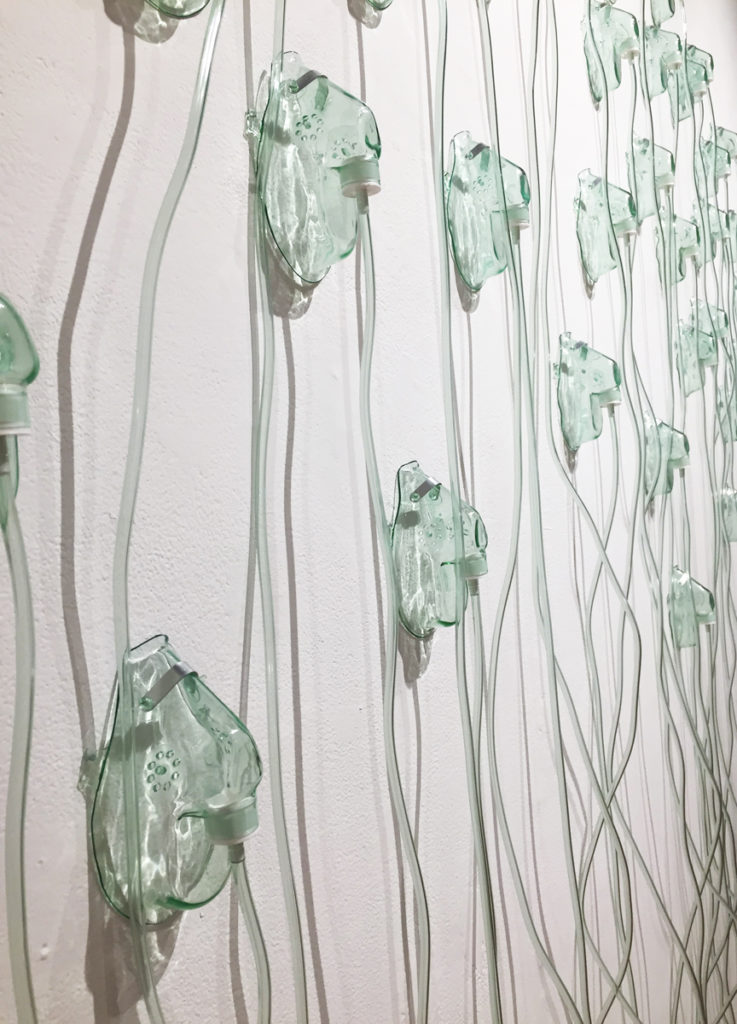
Hope is the core message of the exhibition, however, and Whittaker drives the point home with a piece that represents “the converging of science and technology, of human and plant.”
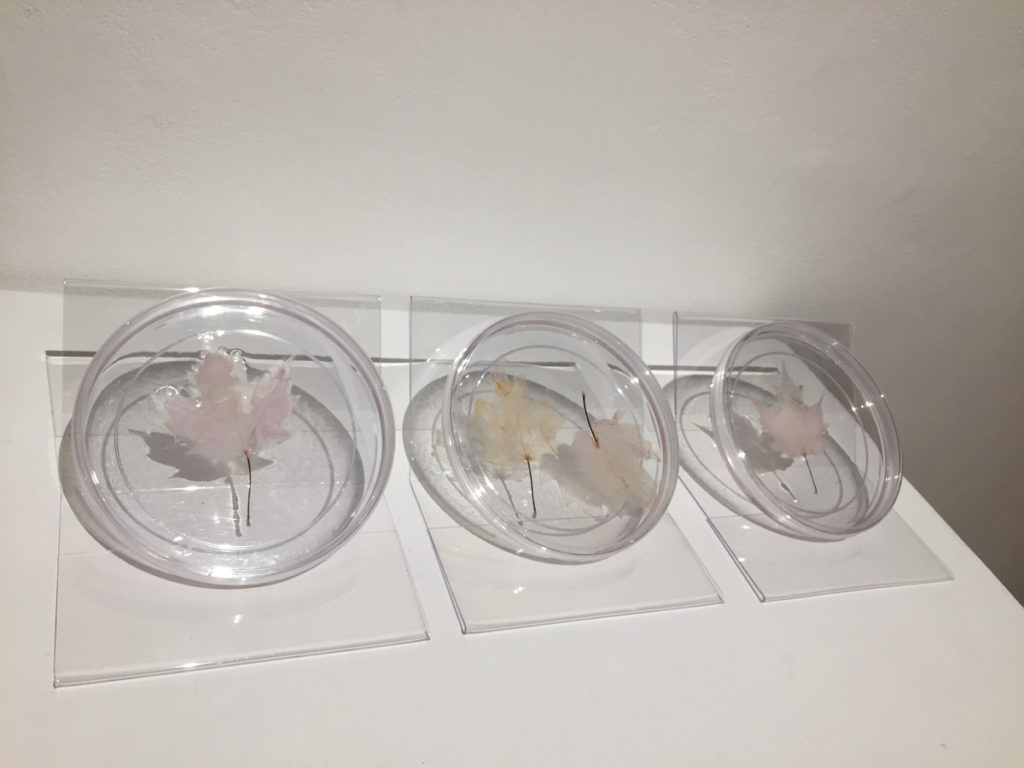
Contained was made possible through Elaine’s artist-in-residence collaboration with Andrew Pelling and Ryan Hickey at the Pelling Laboratory for Augmented Biology at the University of Ottawa.
The exhibition is now on at Toronto’s Red Head Gallery and will run until March 24. To learn more about Elaine Whittaker and her work, check out her website.


























